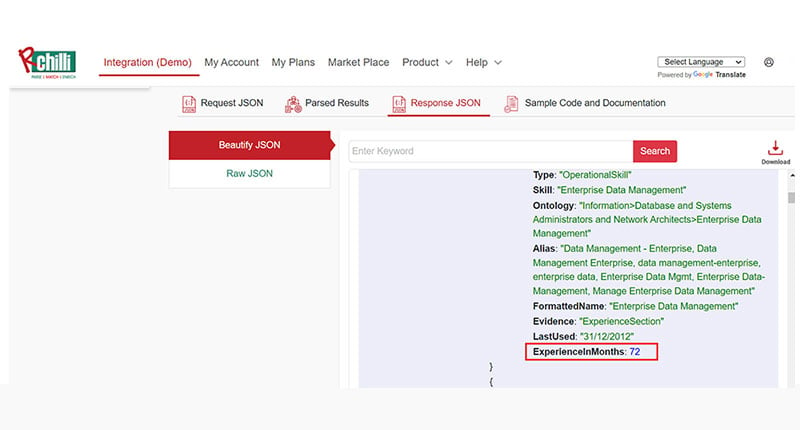
Imagine a resume parser as the Sherlock Holmes of hiring – it's a clever detective with a hilarious twist. Instead of solving mysteries, it delves into resumes, deciphering skills, experiences, and achievements like a pro. But wait, here's the punchline: it's armed with a "taxonomy toolkit" that's like a secret decoder ring, translating resume into a language hiring software can actually understand. So, it helps you uncover the perfect candidate for the job role! 🕵️♂️🔍
Is your resume parser giving accurate results?
Do you want to dig out more information from the resumes?
What if your resume parser offers more than what you expect?
I understand the common concerns of HR professionals while using a resume parser. But let me tell you that with the help of taxonomy, it can offer remarkable results to the users.
Let's discuss a few use cases of adding taxonomy to your resume parser
Connecting Job Profile to Skills
With the help of related skills/job profiles, you can get skills related to a specific job profile and vice versa.
For example, for a job profile ‘Head of Resourcing,’ RChilli offers related skills such as Resource Allocation, Resource Management, Promotional Campaigns, etc.
Thus, if someone has missed writing these skills in the resumes, Taxonomy can create an additional list of skills and help you tag resumes on skill parameters.
It helps you to identify even those resumes that miss having these skills. As a result, you can enhance your search by up to 90%.
RChilli also helps in creating weightage on skills and provides their proficiency level.
It offers Related Skills/Jobs with an 80% success rate.
Three Exceptional Classifications of Skills
Once you parse a resume, RChilli offers remarkable information on skills.
- Skills Block- The section of the resume that shows the candidate's skills.
- Skills Keywords- Any other skills mentioned in the resume, e.g., in the summary or the paragraph of the resume.
- Segregated Skill: Skill keywords are further classified into segregated skills:
a) Type-
There are three types of skills:
i) Operational Skills- You can judge the candidates' expertise through these skills. These skills are considered while searching for the right fit.
ii) Soft Skills- These include communication, strategic planning, which are assessed while interviewing.
iii) Behavioral Skills- These include candidates' core values and ethical values, which are assessed during the interview.
b) Skill- An ability of the candidate to do a specific job.
c) Ontology- It provides information on the field from where the skill belongs.
d) Alias- Synonyms of the skill.
e) Formatted Name- The standard name of the skill, e.g., Microsoft Excel, is the formatted name of ‘Excel.’
f) Evidence- It shows the section in the resume from where the skill is picked up.
g) Last Used- It details when the candidate last used the skill.
h) Experience in Months- The candidate's total experience for the skill.
Let us give you a few examples of how you can use this classification:
1) You can check 'Evidence' If you are looking for skills only mentioned in the Experience section.
.jpg?width=800&height=430&name=evidence%20(2).jpg)
2) Another scenario is if you want to see which skills the candidate has used in the last five years, you can check ‘Last Used.’
3) If you are looking for a candidate with a defined experience in using a skill, you can check ‘Experience in Months.’

Are you feeling amazed by these use cases?
Let's talk, and we will help you explore more about them here.
Source: RChilli blog



























